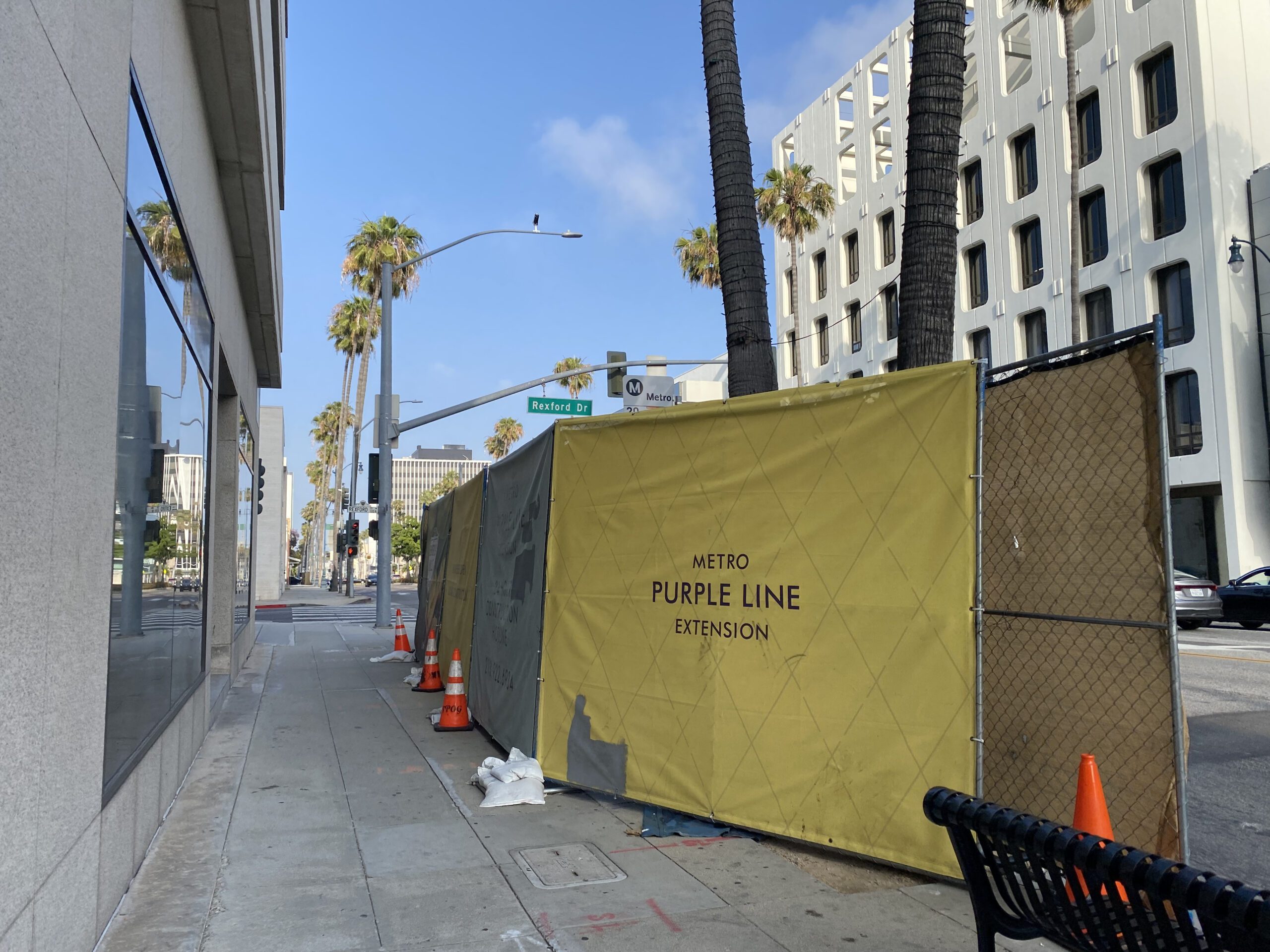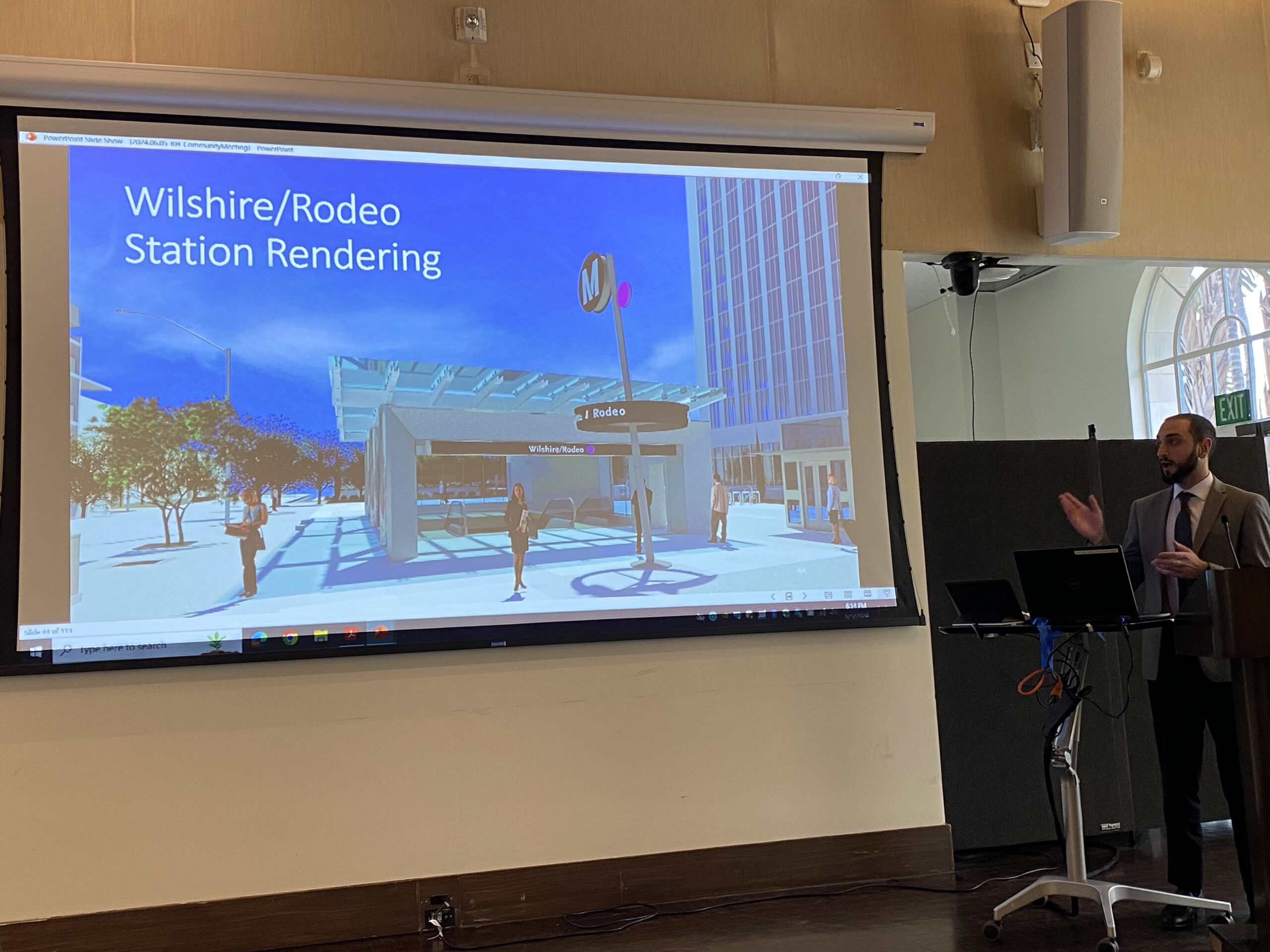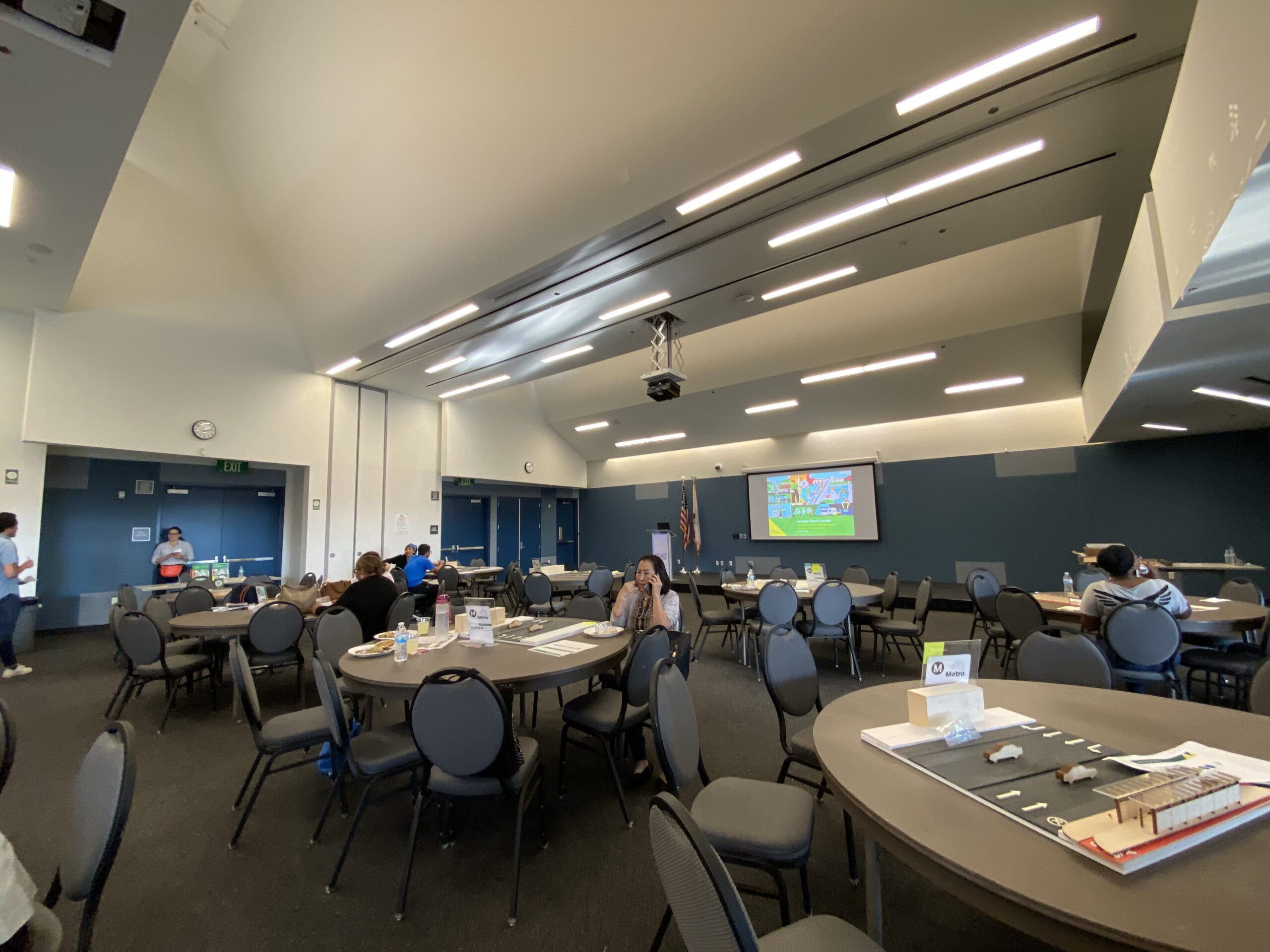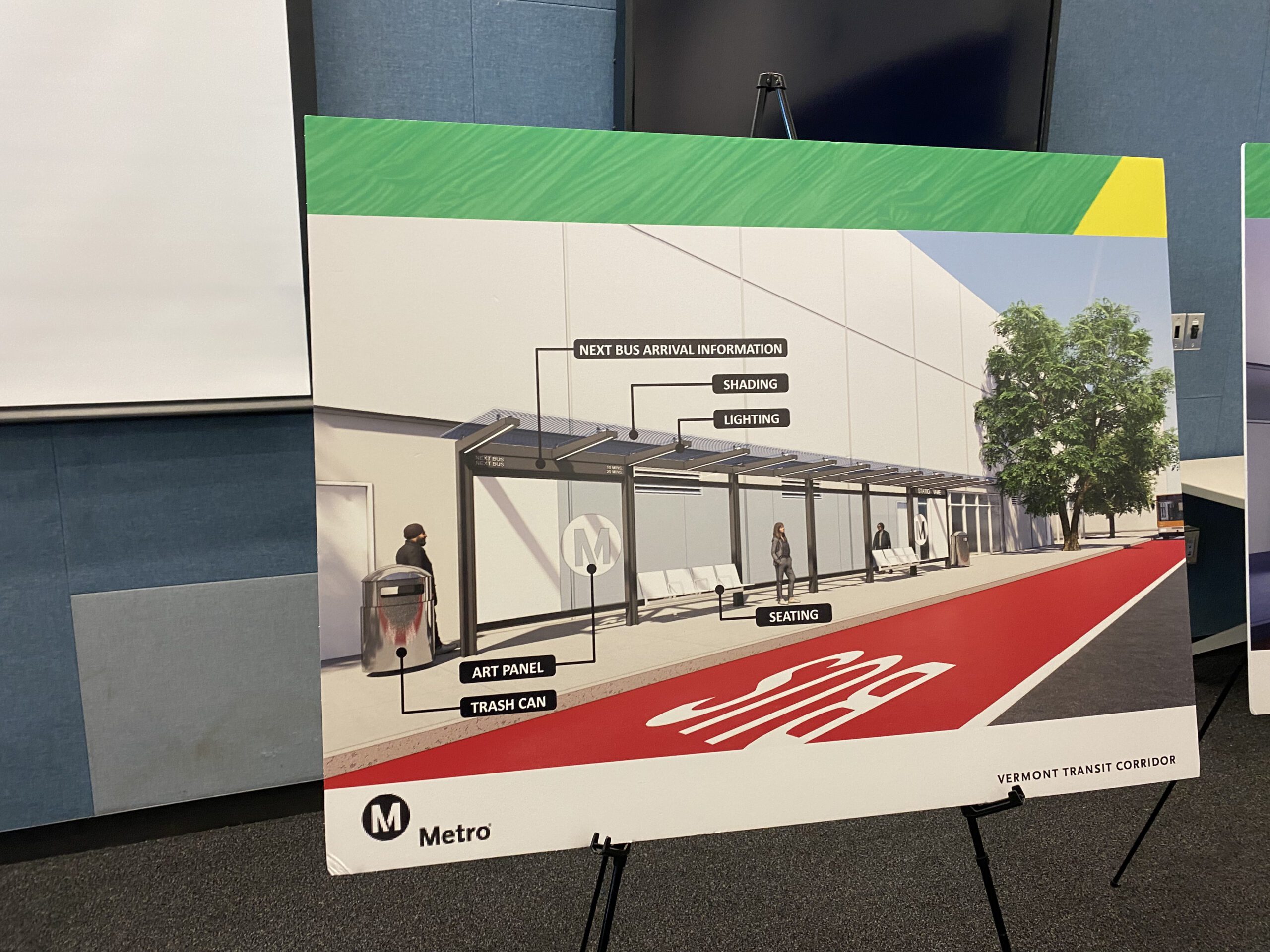
Metro is amid several exciting projects aiming to increase and improve service and accessibility across the greater Los Angeles area. LA has a reputation for being car-centric, even doubling down on its car culture ever since the freeway system was introduced. But in the 2020s, the land of infamous sprawl is now leading the nation in vastly expanding public transit networks and embracing mixed-use developments in lieu of zealous single-family zoning that caused said sprawl.
Two notable projects seeing major progress in 2024, with expectations to be fully or partially ready by 2025, are the Beverly Hills purple line extension and the transformation of the Vermont Corridor with the bus rapid transit (BRT) project. LA Digs reporter Rachel Presser attended both public meetings for updates and comments.
Tunnel Boring Complete for Beverly Hills D Line Station, Drivers Warned of Constricted Lanes Through 2026

According to Metro’s capital projects portal, the first new purple line stations that will open in 2025 are Wilshire-La Brea, Wilshire-Fairfax, and Wilshire-La Cienega. The two new stations in Beverly Hills, Wilshire-Rodeo and Century City-Constellation near the Westwood boundary, are not expected to open until 2026.
Per Metro representatives who spoke at the public meeting at Beverly Hills City Hall, underground construction is taking place 24/7 to ensure the project is completed on time. Excavation is estimated to complete in summer 2024, and tunnel boring is completed. Major tunneling and excavation is completed from Western Avenue to VA Hospital, according to Metro representatives.
While public transit coming to Beverly Hills is an exciting prospect that will make it easier for tourists and commuters in the long run, easing heavy traffic on arterial streets, the construction of the new Metro stations is, unfortunately, going to cause some back-up in the short term. Construction is in progress on Wilshire Boulevard between El Camino Drive and Crescent Drive from 9AM to 4PM.
Lanes will be constricted on Wilshire Boulevard, La Cienega Boulevard, and various side streets in Beverly Hills during construction and the surveying process. Until the project is complete in 2026, drivers are advised to use Burton Way as a detour to avoid bottlenecking in a single lane.
Vermont Corridor BRT Interactive Workshops, 13 New Stations Alongside Existing Bus Service

The Beverly Hills purple line update meetings were fairly short and to the point, delivering updates on progress and initiatives that local business owners impacted by the construction can take advantage of like Eat, Shop, Play and Business Impact Fund grants. Across town at Los Angeles Community College’s East Hollywood campus, a more boisterous and interactive meeting took place.
The Vermont Corridor Project is a colossal, multi-stage project exploring near-term, medium-term, and long-term solutions to transforming the Vermont Corridor from a dangerous gridlock to a world-class transit system. Metro chose to invest in this massive multi-stage project because the 12.4-mile stretch encompassing four rail lines (five once the Southeast Gateway project is complete), numerous bus lines, and multiple freeways can vastly expedite travel between south LA, DTLA, and East Hollywood with the right infrastructure.
Rather than strictly provide updates to the project, the goal of the meeting (and upcoming Vermont Corridor public meetings) is to engage with the community on how to improve transit along the entire corridor while informing residents and stakeholders of the logistical realities of the situation.

Feasibility studies for the Vermont Corridor were completed in 2022. Both rail expansion and bus service improvements were explored in this study. Metro plans to build rail along the Vermont Corridor if funding becomes available. In the medium-term, the new BRT stations are slated to open in early-mid 2025.
What is BRT? Bus rapid transit isn’t just another Metro bus, like the existing 204 and 754 routes that currently operate up and down Vermont Avenue from Harbor Gateway to East Hollywood. The Vermont Corridor BRT is more akin to the Metro G and J busways operating in the Valley and Harbor Freeway respectively. The BRT gets dedicated lanes and signal priority, and along this incredibly long stretch, only 13 stops are made, in comparison to the dozens along the 204 and 754 routes:
- Vermont-Sunset
- Vermont-Santa onica
- Vermont-Beverly
- Vermont-3rd Street
- Vermont-Pico
- Vermont-Adams
- Expo-Vermont
- Vermont-Vernon
- Vermont-Florence
- Vermont-Manchester
- Vermont-Century
- Vermont-Athens
- Vermont 120th Street
In addition to greatly speeding up travel along one of the busiest arterial roads in LA, Metro is also prioritizing comfort and sustainability. Passenger amenities are being explored in these station design workshops, such as sun-blocking bus shelters, ample seating, bike storage, lighting, and beautification efforts like planters and public art.
Sidewalks will be expanded to accommodate larger amounts of passengers and service will be more frequent than the standard Metro buses that run along Vermont Avenue. Near-term improvements include curb-running buses during peak commute hours to encourage more transit use during these times.
Angel City has more than its fair share of problems that need to be addressed. Nevertheless, this is an exciting time to see Los Angeles embrace a transit-oriented future that harkens back to its streetcar roots.
Although it would’ve been great if they added at least one more BRT stop to take passengers directly to the heart of Los Feliz.

